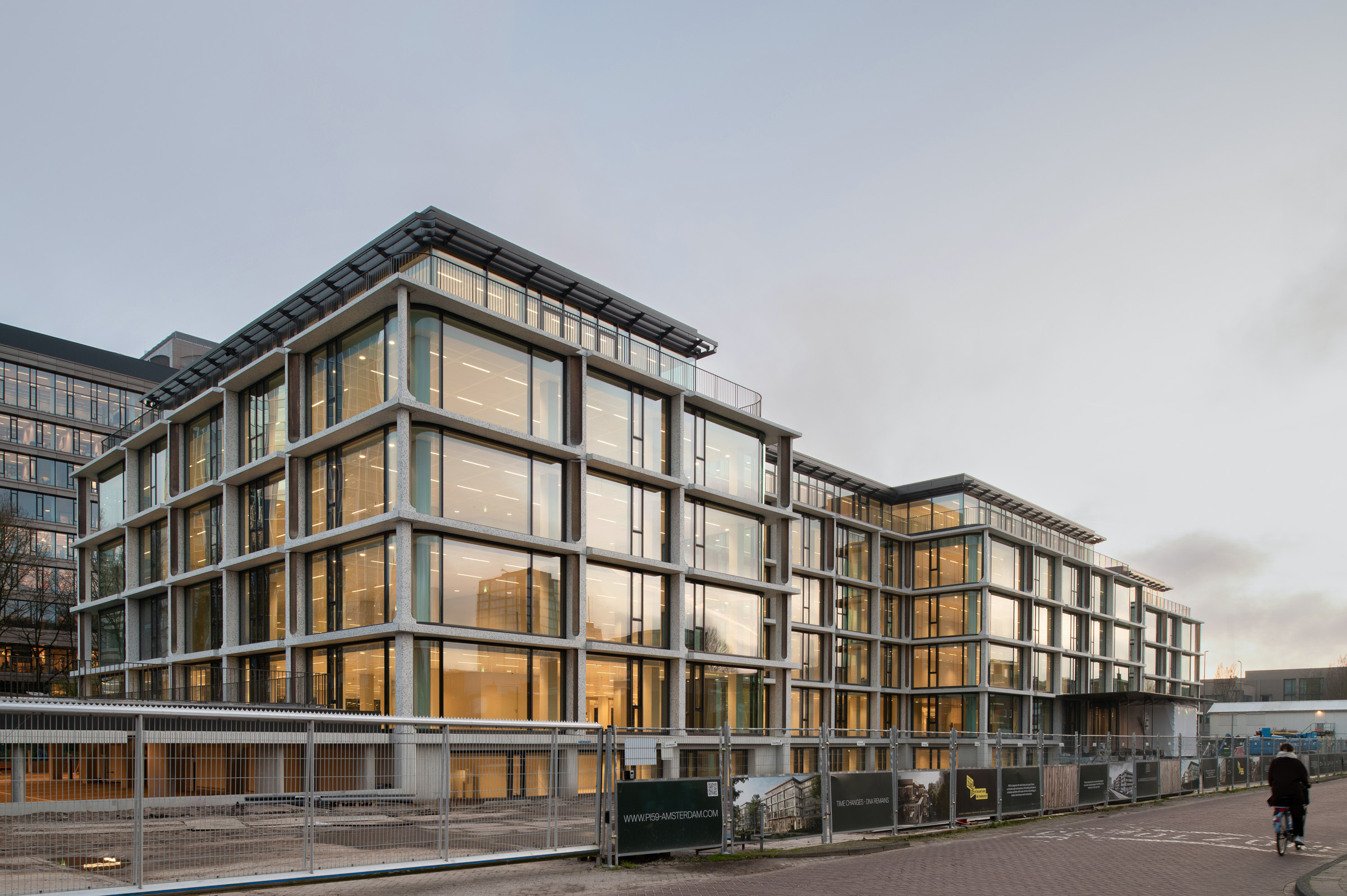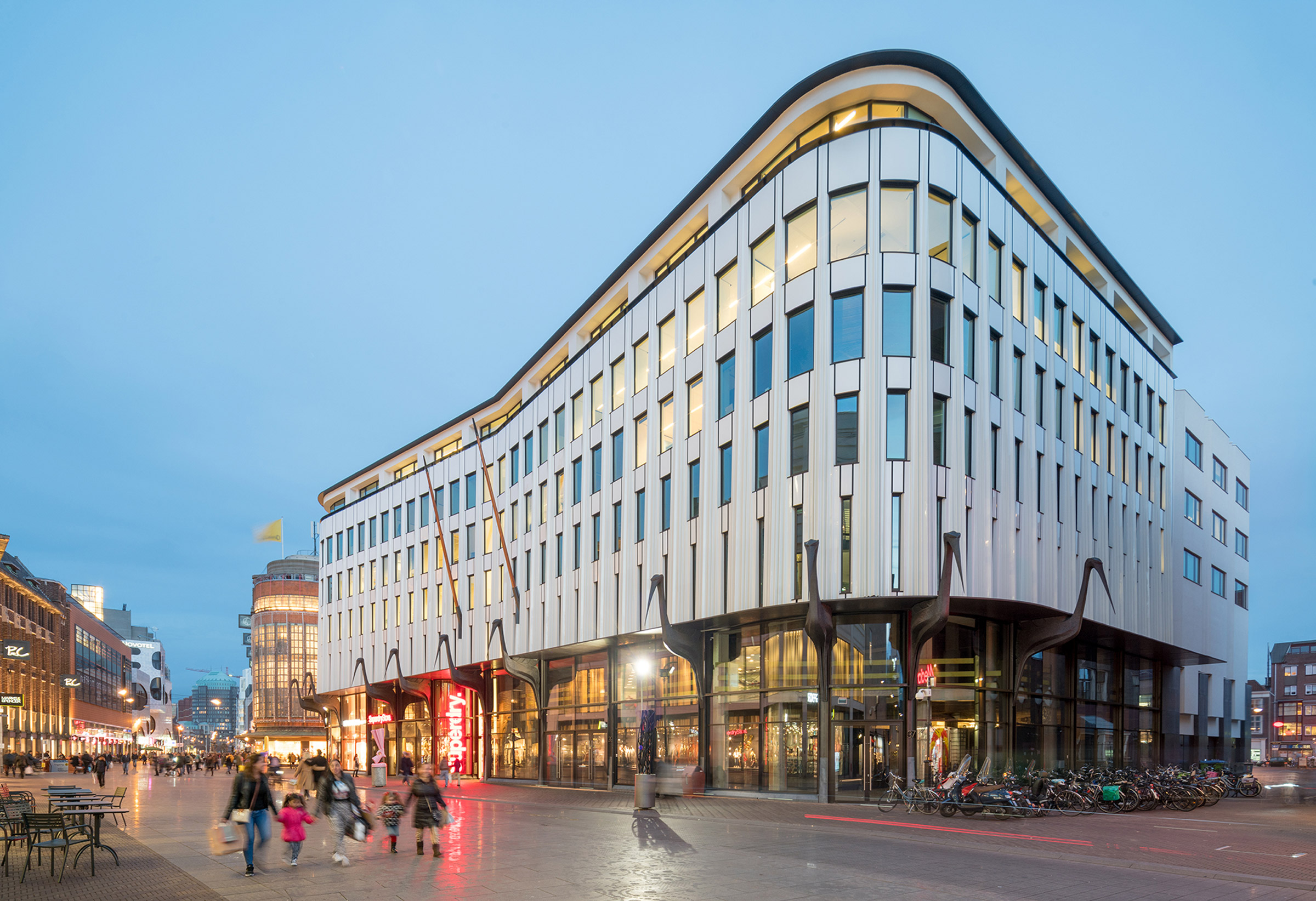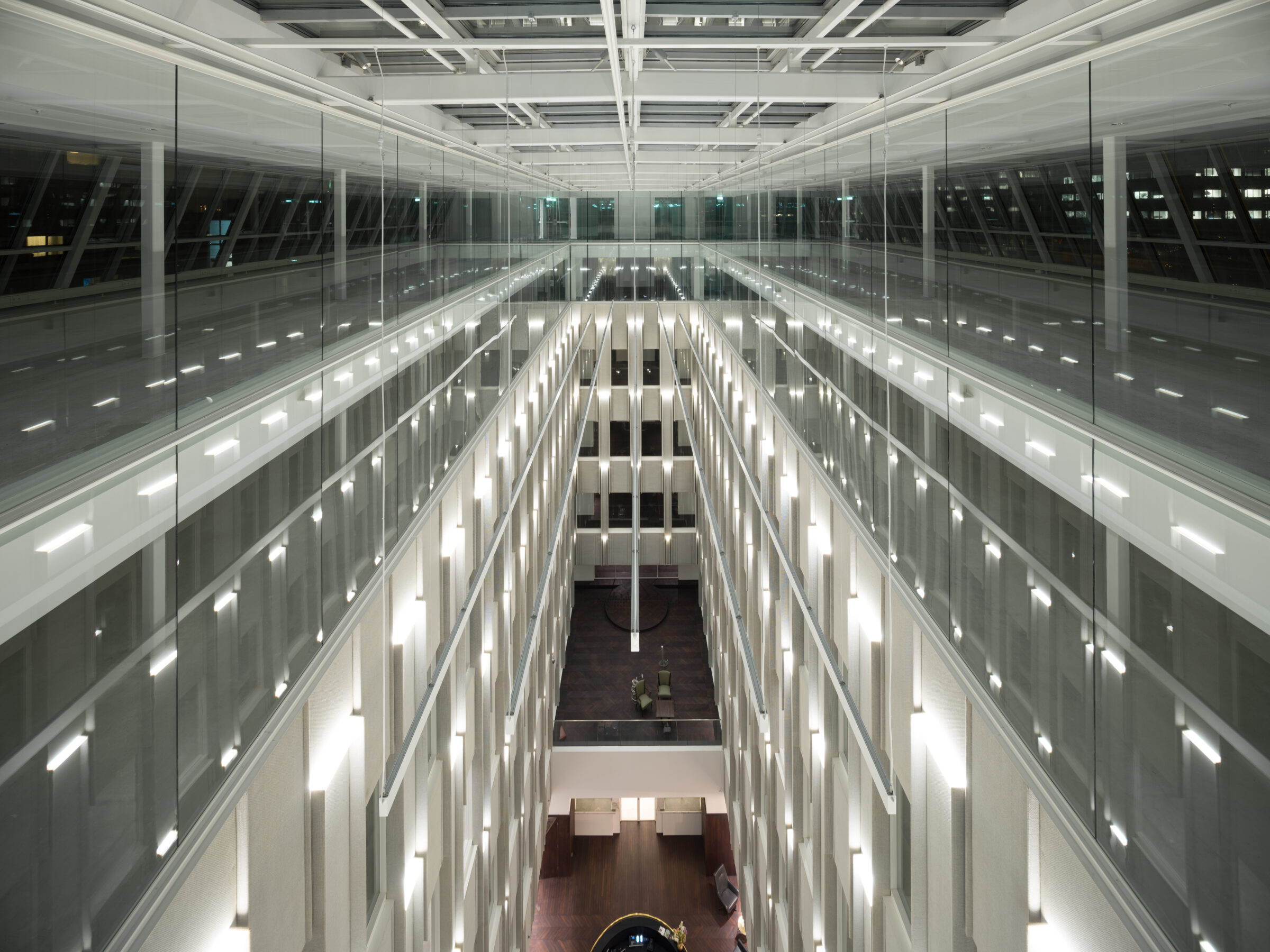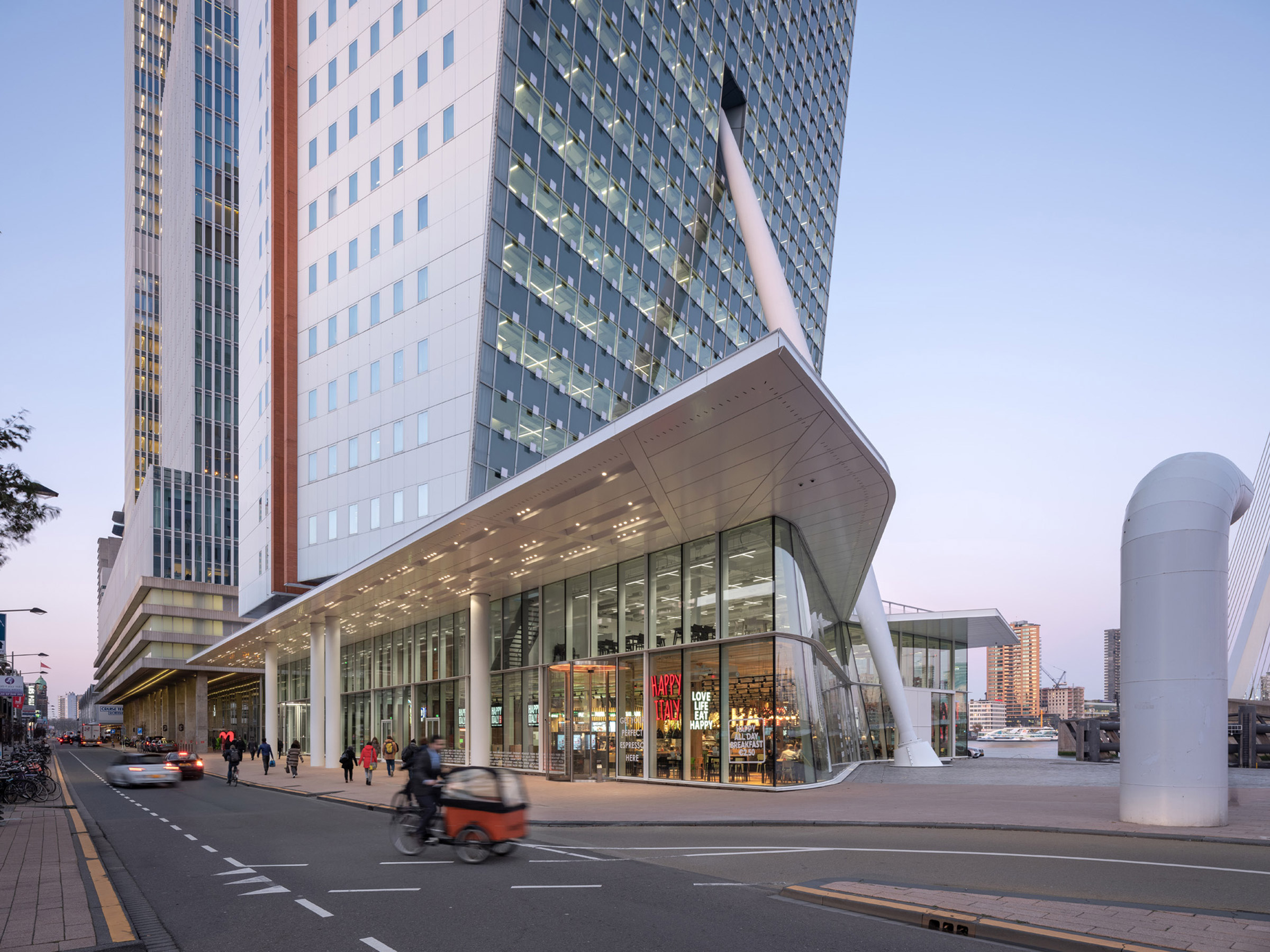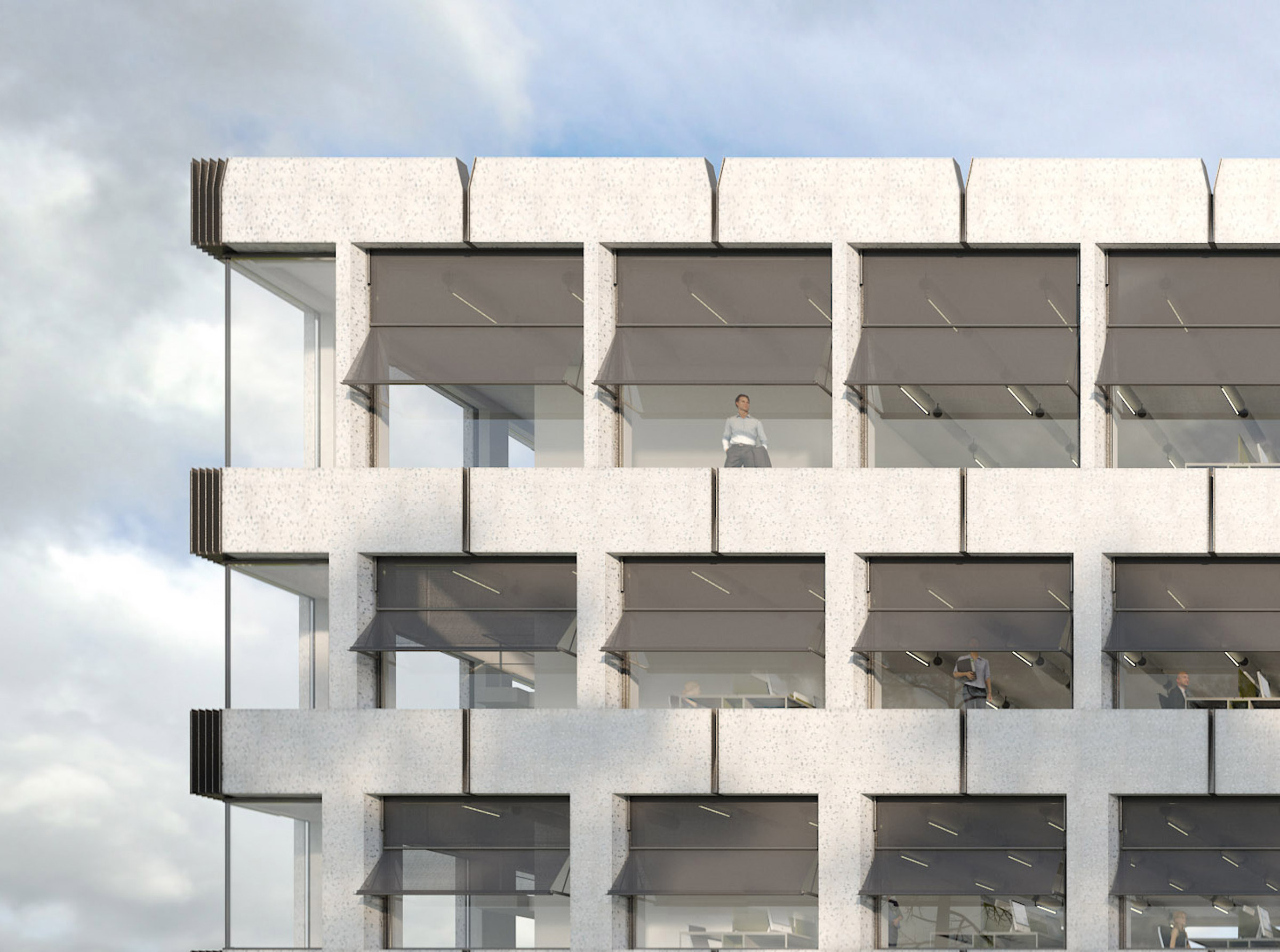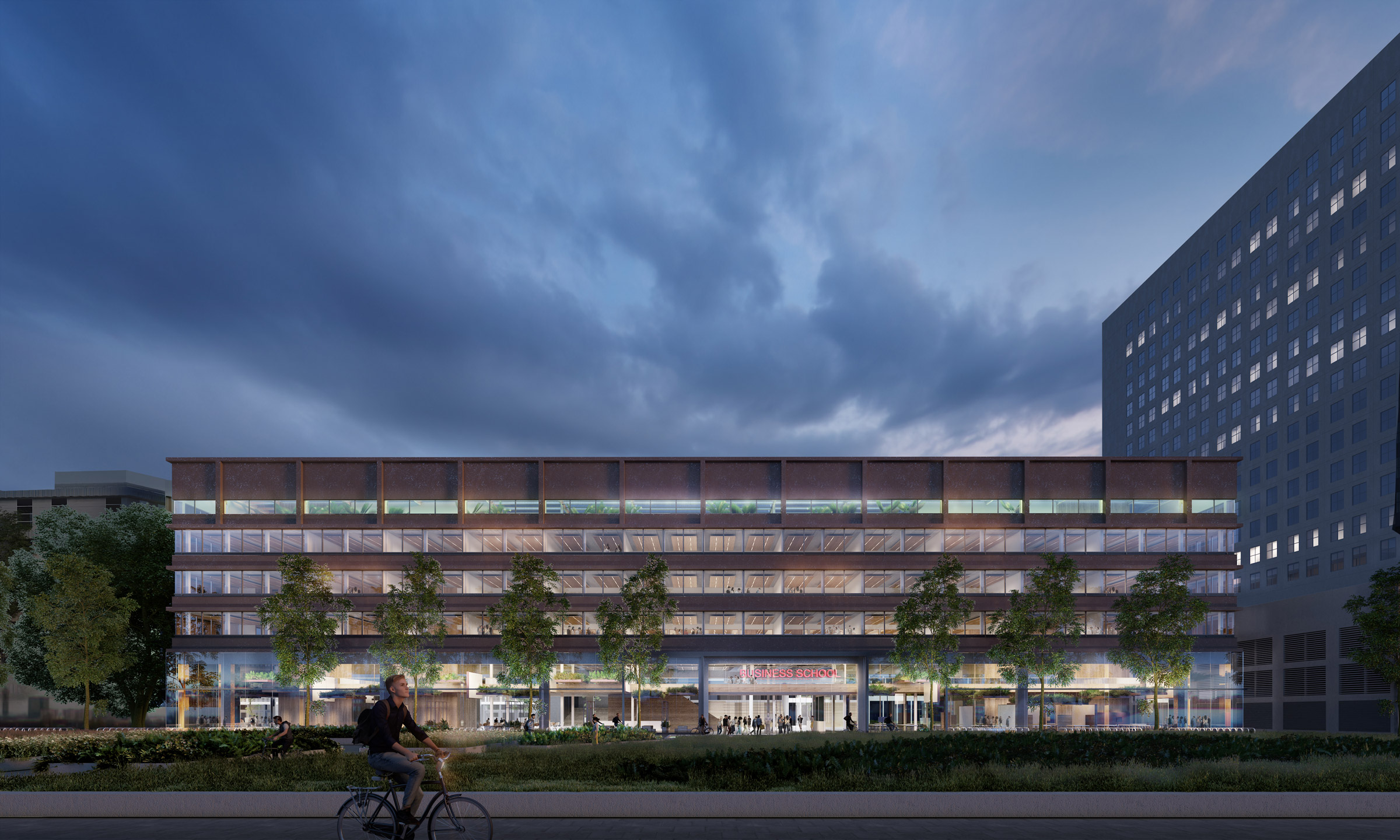Amsterdam's Zuidas has something of a dual character. Colossal offices on the south side of the A10, and terraced houses on the north side. In the middle there is a building from the 1970s, designed as an office, that is used as a school and which we are bringing back to its original function. However, it will become the 'best-in-class office building', because the city, neighbourhood, location and building demand this. We felt duty-bound to do this.
The Municipality of The Hague has developed Grote Marktstraat into the city’s main shopping street with an international ambience. The street has been turned into a sophisticated, car-free shopping boulevard. In line with this ambition, the old Sijthoff City has been transformed from a down-at-heel 1980s office building into a sophisticated retail Mecca.
Blaak House, designed by Kees Elffers as a classical interpretation of reconstruction architecture dates from 1950 and initially accommodated the Netherlands Trading Society. The building is characterised by a distinctive brick facade with a stately portico and a splendid natural stone entrance. Although it was once considered as ‘ready for demolition’, in 2010 it was designated as a nationally listed building.
In 2016, KPN decided to move its head office functions from The Hague to the KPN Toren on Wilhelminapier in Rotterdam. This building from 2000 by architect Renzo Piano is right next to the Erasmus Bridge and is known for its sloping facade. KPN wanted to add a sizeable publicly accessible programme and at the same time design all work and meeting places in accordance with KPN’s SMART technology.
Mediahaven
Now that the Houthaven neighbourhood is no longer used for the transhipment of timber, this section of land is changing into a mixed creative area, while retaining its industrial character. Soon this will be home to large ships, stylish fashion, rugged factories, lively television recordings and theatre shows. Mediahaven turns making television into a public and open experience, and it is a creative pioneer that has brought expression to the transformation of Houthavens.
Heliport Dordrecht
A motorway is not a city square, shopping street, or road leading to a train station. A motorway crosses through the landscape, touches cities, and above all offers visibility and accessibility. Why then do we often see office buildings alongside motorways that look as if they are part of the urban fabric? Why do they have the front door on a pavement, with a picnic table behind a sound barrier and a large logo on the roof for recognition? We think this can be done differently and better. Heliport in Dordrecht was founded on these ambitions.
